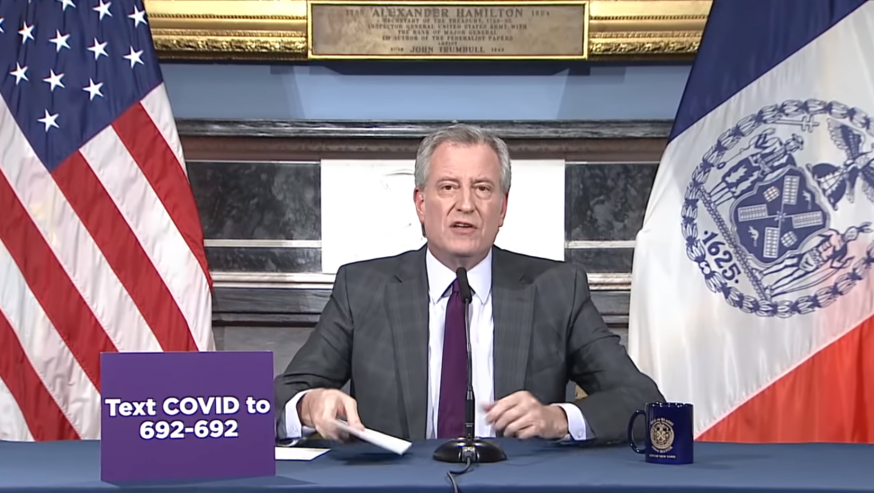
NYC Mayor Bill de Blasio
April 7, 2020 By Christian Murray
Mayor Bill de Blasio said today that the city will soon release data that tracks the race and ethnicity of New Yorkers who have contracted COVID-19.
De Blasio said that people of color and those who reside in lower-income communities are getting hit harder by the coronavirus than elsewhere.
“This disease is affecting people disproportionately in lower-income communities” and in “communities of color,” de Blasio said. “The extent of that disparity we’re still fully trying to understand. And the data we’ll give you will help us understand.”
The mayor noted that the data is preliminary, since it isn’t as easy to get in the midst of the crisis as age and gender.
The mayor has been slow to release neighborhood and ethnic data—despite multiple requests in recent weeks from reporters and elected officials. The only raw data that was provided until April 1 was on a borough basis.
The city released raw data on who had tested positive by zip code for coronavirus for the first time last week. That data, however, does not provide a breakdown of the race and ethnicity of the victims—although the zip codes heavily affected are the immigrant neighborhoods of Corona, Jackson Heights and Elmhurst—as well as in the orthodox Jewish areas of Brooklyn such as Borough Park and Midwood.
De Blasio’s decision to release the data follows a letter sent Thursday by public advocate Jumaane Williams calling for its release.
This morning Comptroller Scott Stringer also sent a letter to de Blasio—also addressed to Department of Health and Mental Hygiene Commissioner Dr. Oxiris Barbot—urging him to release the demographic data.
“I am writing today to add my voice to those urging the city to release demographic data that reveals the race and the ethnicity of those who have been afflicted by the COVID-19 virus in New York City,” Stringer wrote.
Stringer noted that the virus is deepening the social and economic inequalities in the city, noting that it is disproportionally affecting lower-income people of color.
Stringer is also calling on the city to release data pertaining to the occupation of those affected by COVID-19.
He said that many of the frontline workers who are most at risk are people of color who work as EMTs, doctors, nurses, pharmacy and grocery workers and building employees.
Stringer said the city needs the racial and ethnic data in order to “identify and address the health inequity that plague so many of our communities.”
3 Comments

Data should be broken down to education and diet.
Paris announced a ban on individual outdoor sports between the hours of 10:00 am and 07:00 pm starting Wednesday, 4/8. That includes joggers of ALL colors.
Apparently Parisians couldn’t play by the rules to stay indoors either.
Our mayor and governor look exhausted and stressed. I hope they are getting enough sleep and some rest during the day. Trump looks like he is resting well and speaking at one of his rallies when he is holding a live briefing on this virus. We here in queens need a big parade when this is all over to thank our officials and essential workers. All boroughs should have their own. I am tired of Manhattan taking all the credit for this city when something is celebrated and thanked.